On a crisp October day, the approach is stealthy. Like stalking deer or turkey, a flash of a stray shadow during an impatient glance, imperceptible ground vibration, or a broken branch can make the fish dash instantly in all directions. Finally at the edge, peering through polarized sunglasses over a steep bank into a rocky Pennsylvania creek, I spot several large (10-14 lb) common carp stirring up pockets of bottom mud between large water-worn boulders. Recurve at the ready, a nearly indestructible fiberglass arrow is let loose, aimed below the fish. A whirl of bright orange line takes off like a flash of lightning. Impact. The line zigzags like a snake and goes limp at the reel. A large carp explodes out of the water and, taking the white harpoon on a 200-lb test line with it, dashes for the nearest tangle of branches. A tree toppled during a recent flood provides shelter for many fish, including the historically introduced European or Asian carp. This gnarly fortress is now the only escape for the arrowed quarry, but I grab the line just in time and begin to reel it in. Feeling of satisfaction is complete only when the fish is retrieved, humanely dispatched, and placed in a cooler.
Bowfishing, a growing sport in many parts of the world, builds on ancient traditions of native cultures that had to rely on harpoons and arrows to harvest prey from shallow rivers, lakes, and oceans. Before the arrival of Columbus on a small Bahamian island, the Taino natives speared fish and sea turtles, eventually cooking them on open fires as barbacoa (the Caribbean precursor of barbeque). To this day, many primitive people rely on this technique for subsistence. Whereas much of modern bowfishing, especially large tournaments, is done from motorboats, often at night, it is also accessible to most archers on a much lower budget from small watercraft (stand-up kayaks, canoes) or off low abandoned bridges. A rewarding experience can be had by wading small bodies of shallow water or by stalking along the shoreline or from the bluffs. Except during deep winter, when bowfishing becomes difficult due to thin ice cover or rough fish bedded in deep pools, different parts of the year present welcome challenges: from spawning carp making an easy mark near the water surface in April-June to high-bank shooting in low-angle sunlight in late November.
I use a very simple and light bowfishing setup that allows high mobility in most forested river or lake settings. A traditional-style takedown recurve bow with an AMS retriever works well for snap shooting at a suddenly appearing or rapidly moving target. Once retrieved onto the bank, the fish is placed in a large cooler bag (basic ones cost $5-$10 and can keep 20-30 lb of fish fresh without ice for several hours). Similar insulated backpacks are also available at very low prices. This option is much more portable than a solid plastic cooler and less messy than carrying large fish on a stringer or in a plastic bag. While moving between fishing spots, the bow can be easily placed on the bag handle or secured to a backpack, the entire setup weighing only a few pounds. At the end of the day, the bag can be placed inside the car or quickly secured to a roof rack for transport. This setup is also easily accommodated on a kayak, either for quick transit between fishing spots or for shooting directly off the watercraft. With dozens of shots taken during each trip, bowfishing provides an excellent off-season practice opportunity for a bowhunter or any archer who wishes to test their skill while enjoying a fun-filled outing with friends or a relaxing getaway at the water’s edge punctuated by an experience of one of the most ancient and challenging hunting skills.


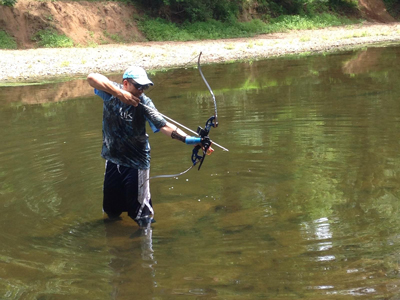
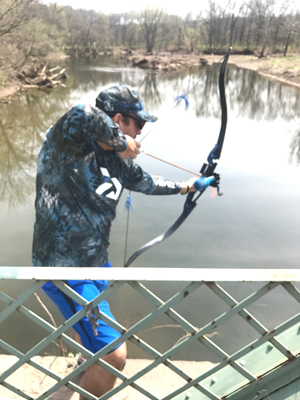
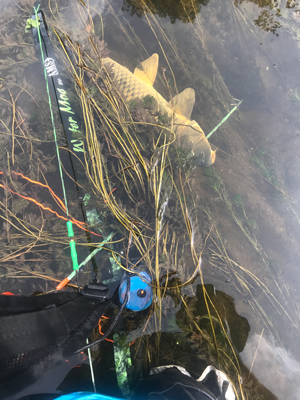


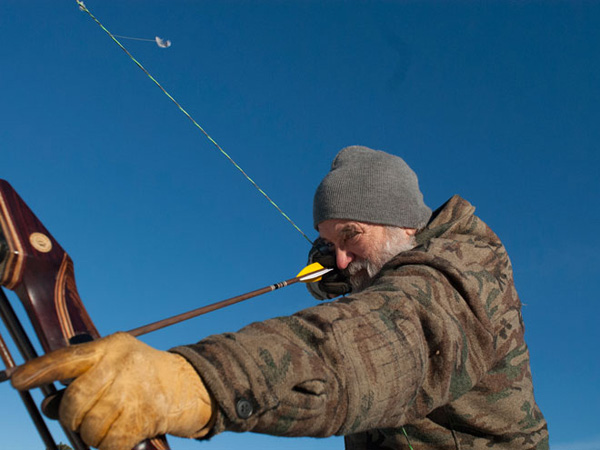

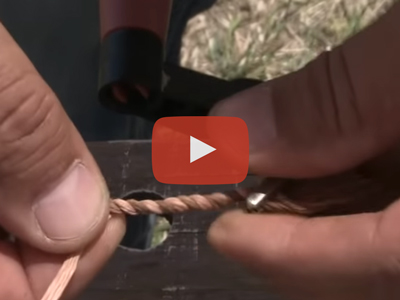
Good article! I especially like the idea of using a large cooler bag for transporting fish when sneaking along a shoreline.
Nice Article! DO you guys eat the carp? What is the biggest carp you have shot? I love bowfishing. So much in fact I just started to charter in Southern Louisiana.
New Orleans bowfishing